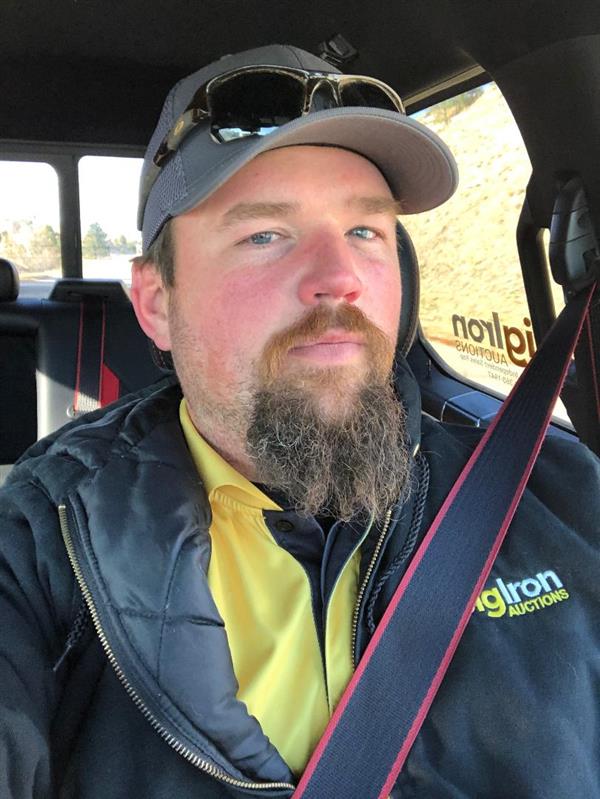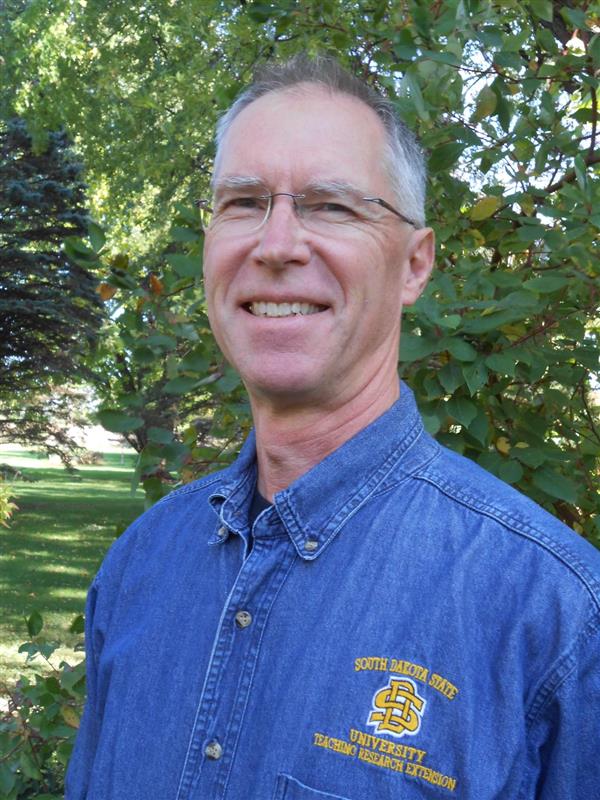Article Archives
Fire Suppression Kits Prove Their Worth
Tuesday, December 1, 2020
filed under: Equipment
Retirement hasn’t exactly been what Dan Humburg expected. He retired from his job teaching agricultural engineering at South Dakota State University in 2016. But he’s been just as busy in retirement as he was during his years at the university.
This year alone, Humburg has sold more than 30 of his combine fire suppression kits. His phone is always ringing; he is constantly fielding calls from interested growers, as well as from satisfied customers.
 Jon Fuchser
Gordon, Neb., farmer Jon Fuchser is among those satisfied customers. He purchased one of Humburg’s kits after a stressful harvest in 2019.
Jon Fuchser
Gordon, Neb., farmer Jon Fuchser is among those satisfied customers. He purchased one of Humburg’s kits after a stressful harvest in 2019.
“We traded combines last year from a John Deere 9610 to a 9770 right at soybean harvest,” Fuchser recalls. “We had five separate fires during sunflower harvest, all along the left side of the combine by the exhaust manifold. Two of those fires nearly took the machine.
“I’ll never forget that last fire we had, the one that convinced me it was time to find a solution,” Fuchser recalls. “I smelled fire, sprayed the fire extinguisher on the fuel tank and called my neighbors and the fire department. I got the header off and the fire department showed up with three trucks. The damage was purely cosmetic. We were very fortunate, but that’s when I started doing some research on how to prevent those fires.”
His research led him to Humburg’s SDSU research and fire suppression kits. Fuchser purchased a kit last spring.
“The cost was a little more than what I wanted to spend; but I knew we had to do something different, so I bought it,” he says. “We put it on before sunflower harvest, and we have not had any fires on that left side of the combine where we had so many issues last year. This system has taken the edge off and helped a lot. The threat being reduced is worth every penny we spent.”
It’s been especially welcome this harvest; as of early November, Fuchser says they’ve received about two inches of rain since June 1. Normally his farm in the Panhandle of Nebraska would measure between 12 and 15 inches of rain. Despite the drought, his nearly 500 acres of oil sunflower were yielding 1,300-1,500 lbs/ac. And, nearing the end of the harvest, Fuchser says they’ve only had one small smolder — which he says, based on where the smolder occurred, was likely caused by static electricity.
“We still blow the combine off every 30 acres or so,” he notes.
Those are the kinds of reviews Humburg receives on a regular basis. He says he’s heard from a number of producers who are combining in extremely dry conditions, with moisture as low as 6-9%.
 Dan Humburg
“Those situations can be very volatile and lead to combine fires,” Humburg explains. “I’ve been busier this year than ever before with these kits.”
Dan Humburg
“Those situations can be very volatile and lead to combine fires,” Humburg explains. “I’ve been busier this year than ever before with these kits.”
On the day we visited, Humburg was busy getting two kits ready for a Kenmare, N.D., area producer, who indicated he was willing to drive nearly eight hours one way to pick up two kits from Humburg in Brookings, S.D. Another grower drove from Alberta, Canada, to Brookings — nearly 1,200 miles — to pick up his kit last February. That producer found Humburg after having frequent combine fires during canola harvest. Since then, the same producer has purchased two more kits and referred a neighbor to Humburg. That neighbor bought five kits.
“I ordered 35 blowers for the kits last winter and had two left over from the season before. I will probably only have two or three left after this season,” Humburg relates.
Most of Humburg’s customers are in North Dakota, but he’s sold kits in South Dakota, Nebraska, Montana and Canada. He’s even had inquiries from chickpea and lentil producers in Australia.
“This is not just a local issue, and it’s not an issue just affecting sunflower growers,” Humburg says. “I’ve sold kits to soybean producers who have battled combine fires. It doesn’t happen as frequently in soybeans as in sunflower, but it does happen when conditions are very dry, and especially when it’s windy. There seems to be some risk in canola and safflower as well.”
One Montana safflower producer affirmed the kit allowed him to cut more acres in a day because they spent less time blowing off the engine compartment or hosing down smolders.
It’s a situation Humburg never imagined. Until 2012, he’d never worked with sunflower. But when the South Dakota Oilseeds Council asked researchers at SDSU to study the issue of combine fires during sunflower harvest, Humburg didn’t hesitate to learn everything he could. His research, funded by the S.D. Oilseeds Council and the National Sunflower Association, had three objectives:
- To understand the basic characteristics of sunflower dust in the lab;
- To see it in action in the field and how it interacts with different areas of the combine; and
- To bring data together to suggest potential engineering solutions that could serve to change or interrupt one or more of the factors present when a harvest fire starts.
That research resulted in a solution: a hardware system that’s added to the combine and prevents the ignition of volatile aerosol dust near hot exhaust components. Humburg built the prototypes and tested them on a variety of combines. He surveyed producers after the harvest and was pleased with the positive results.
Humburg started building the systems in 2014. Unable to find a manufacturer to take over building the kits, he created his own team and business. “I’m still learning about the business side of this!” he says.
Humburg no longer does all of the fabrication himself, and he’s stepped away from the installs as well. He’s published videos on YouTube to help producers install the kits. Now, he’s focused on getting the word out to producers.
“It’s all been word of mouth so far,” he explains. “I’d like to do some more targeted advertising and get the sales lined up earlier in the year. If I could get orders this time of year it would help me plan how many I should be prepared to make. I’m considering offering some early season pricing or a discount if a kit is ordered before a certain date in the spring.
“This is definitely not what I expected my retirement to be like, but it’s kind of fun for a couple of reasons,” Humburg says. “It’s a nice way to supplement my retirement income. It’s also really satisfying to get a call from a farmer who went through a whole season without a smolder. Their productivity is higher and their stress level is lower. That’s a pretty neat thing to be a part of.”
The 2020 price of a FireStop kit is $5,950 plus tax and freight. Humburg says kits should be ordered at least two months prior to sunflower harvest, as parts of the kits have long lead times to manufacture.
To learn more about the kits and specific models, or to place an order, visit www.harvestfires.com. Information on experience specific to different models is available there, too.
— Jody Kerzman